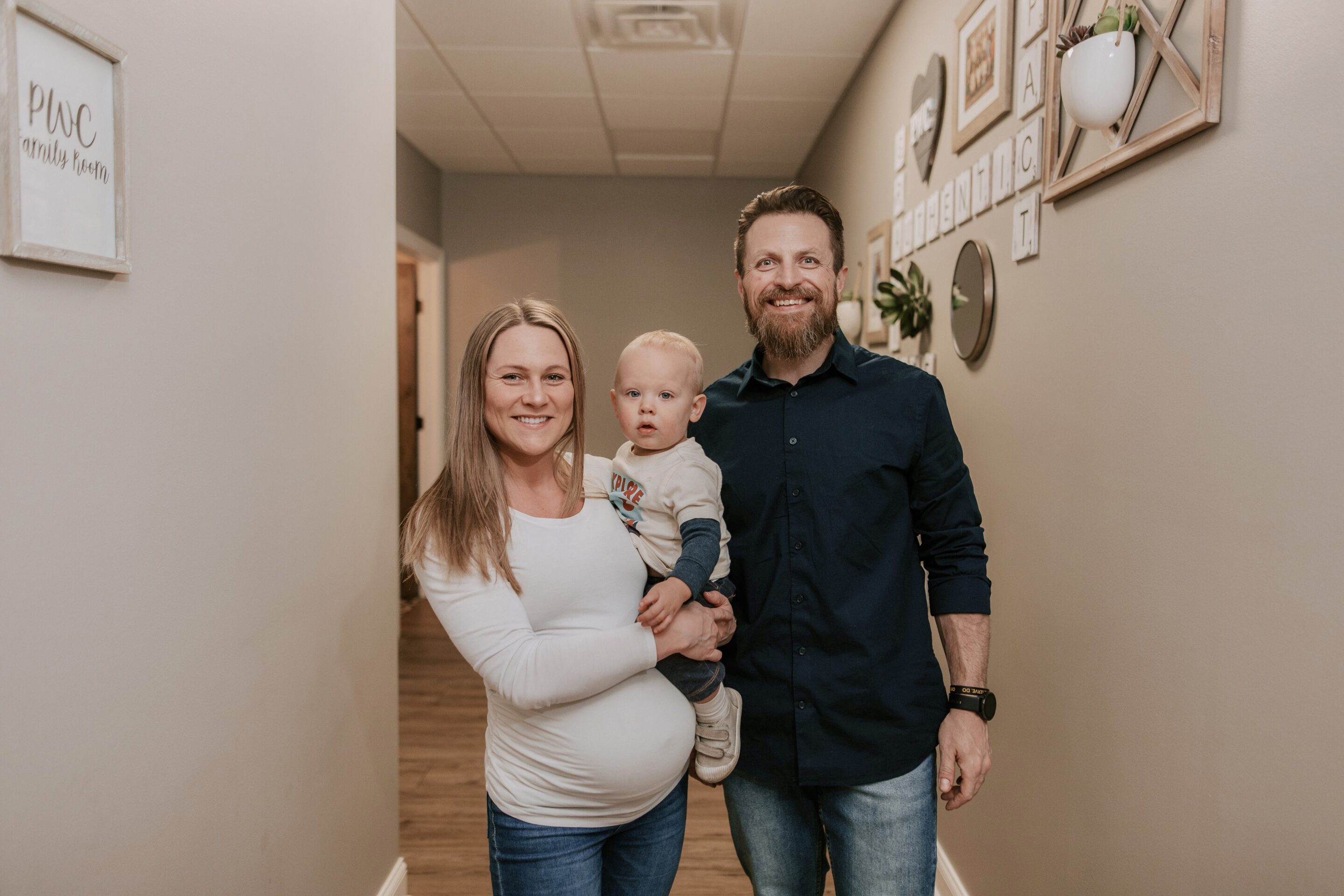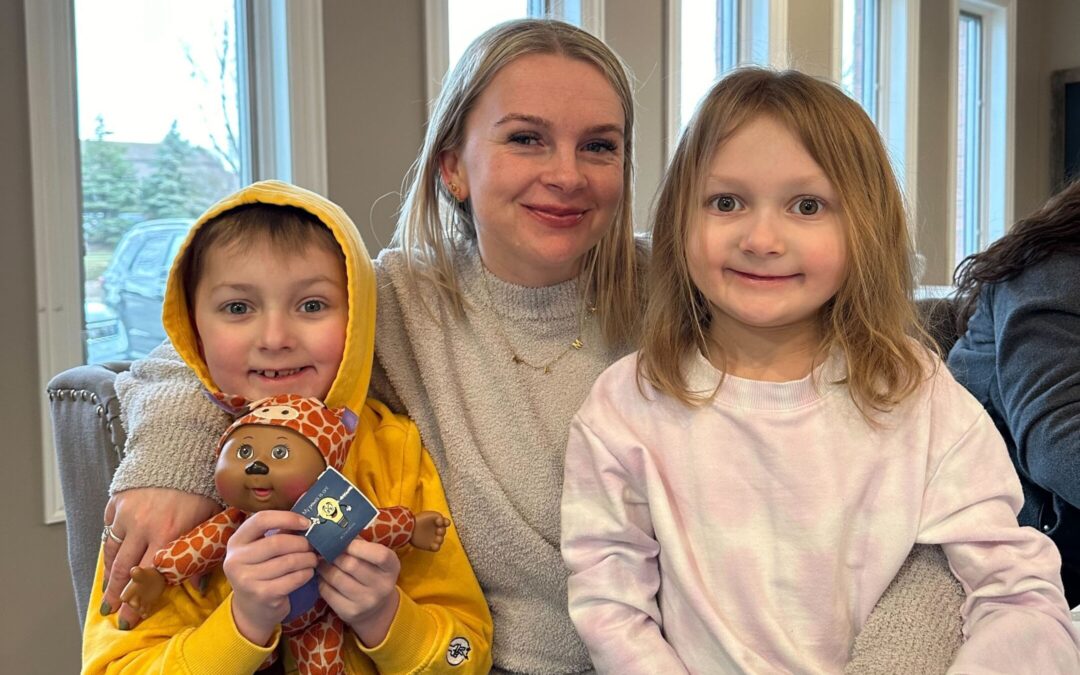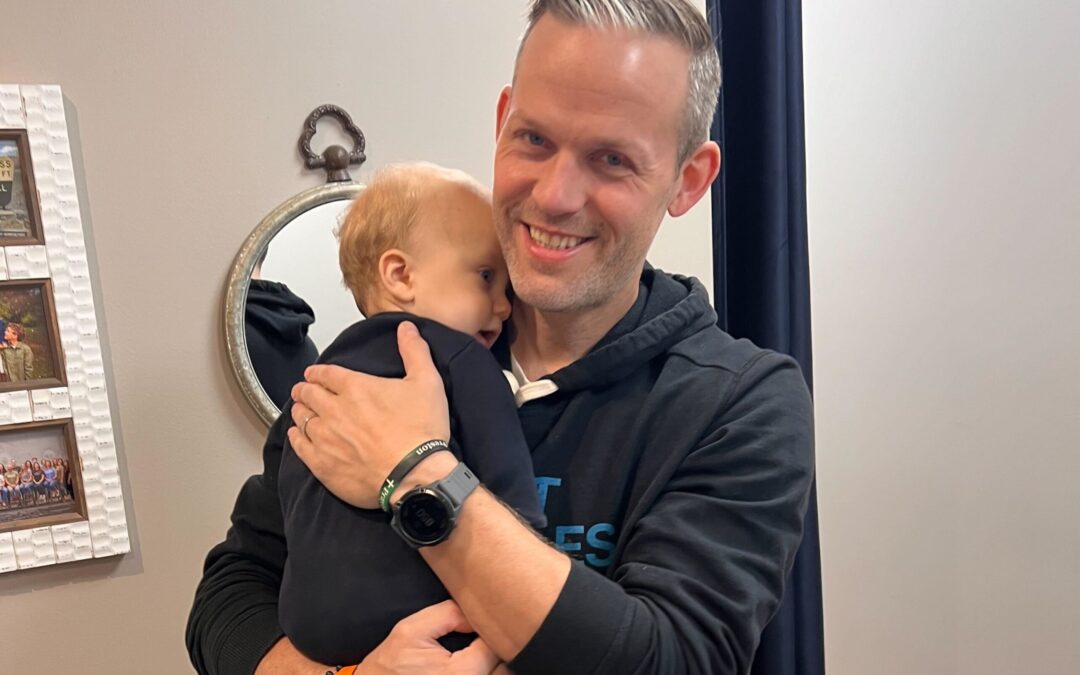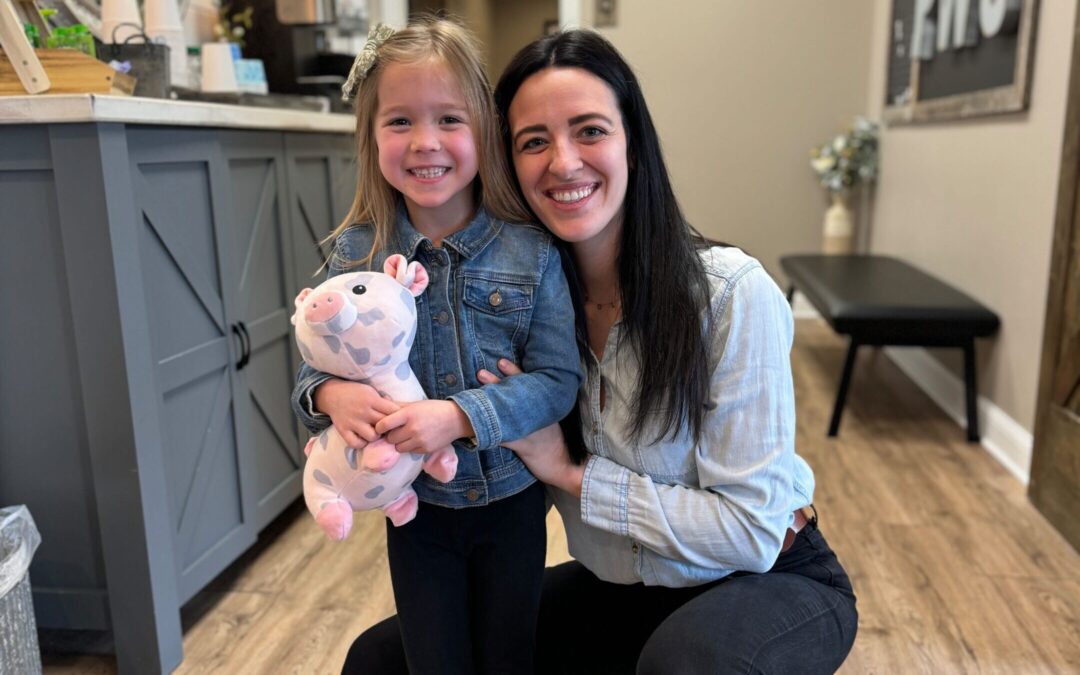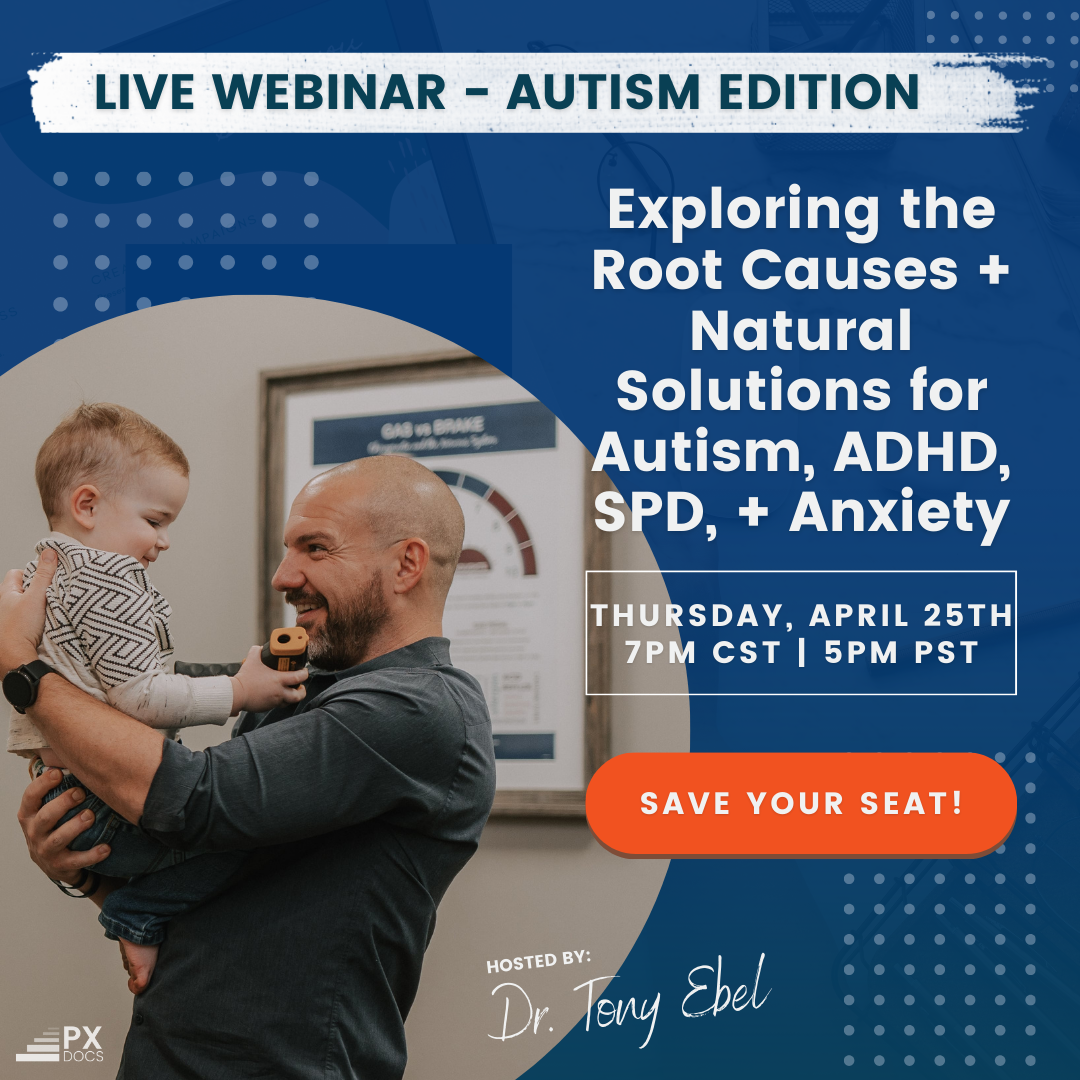No two kids tell the story of how long-lasting the effects of C-section deliveries can be than two beautiful little boys named Jordan and Teo.
These two fraternal twins were born to an absolute rockstar of a mom, Jennifer. Jennifer not only worked full-time but also took care of four other children while pregnant with the twins, including one with special needs. But she also went all out in terms of taking care of herself… getting chiropractic adjustments 2x per week, walking and staying fit, eating healthy, and ensuring her birth team and birth plan were prepped for the outcome she wanted – natural, vaginal deliveries for both boys.
For Jordan’s birth, everything went according to plan. She carried both boys to 36.5 weeks, and Jordan was head down, first in line, and born vaginally.
But for Teo, things were markedly different. Just before it was his turn, Teo flipped back up into a breech position. After trying multiple maneuvers to get him back head down, he had to be delivered via a relatively quick, emergent C-section.
And from that point forward, everything you’ll learn about the science and reality of long-term c-section complications in kids became abundantly clear, tracking the first 12 months of these two boys’ health.
Jordan ate better, calmed and relaxed much more quickly, slept better, and was generally a very easy baby. Teo, on the other hand, had all sorts of difficulties with digestion, sleeping, soothing, and developing optimally. Teo was always smaller, tenser, more stressed, and struggled to gain weight as easily. He also had multiple inflammatory reactions, ear infections, and other health struggles early and often.
At around 6 months old, Teo began suffering from infantile spasms. These are some of the worst things a parent can ever watch their kids go through, which led to Jennifer and Miguel (their dad) rushing Teo straight to the hospital.
After 24 hours in the hospital and multiple drugs and injections given to Teo, he still did not respond. He continued crying uncontrollably and through spasms until he received a precise, neurologically-focused chiropractic adjustment to release his built-up tension and calm his entire central nervous system.
It was remarkable to see the instant changes in Teo after that adjustment. His entire body relaxed, he stopped crying, and he immediately looked at both of his parents and smiled as if to say… “It’s gonna be alright, you guys.”
Teo continued to get daily adjustments for the next 2 weeks and stayed at 3x per week ‘intensive’ Pediatric Chiropractic care for the next many months… in time, he healed entirely from his cesarean complications and neurological injuries.
What Does Teo’s Case Teach Us?
Teo and Jordan had the same genetics, diet, and environment in every way. So essentially, every other ‘variable’ was controlled for these two. The only difference is that Teo was born via C-section, and Jordan wasn’t.
The physical trauma and neurological tension that C-section deliveries can cause is exactly what Teo was left with. That traumatic start to life left his central nervous system stuck in a perpetual state of what’s known as subluxation and dysautonomia, both of which will be explained in detail below and linked to C-section complications.
Most traditional doctors will blame genetics for a child’s struggles. In turn, natural or holistic health websites and practitioners would blame toxins, dairy, gluten, and so forth. But with both of those being truly 100% identical in Jordan and Teo’s story, it’s clear to see how profound of an impact C-section deliveries can have on a child’s life months to years later.
What is a C-Section?
A Cesarean section (C-section) is a surgery performed to deliver a baby. The baby is taken out through an incision in the mother’s abdomen. In the United States, almost one in three women have babies this way. Some C-sections are planned, but many are done when unexpected problems happen during delivery.
Reasons for a C-section may include the following:
- Health problems or health risks in the mother
- The mother carrying more than one baby
- The size or position of the baby
- The baby’s health is in danger
- Labor is not moving along as it should
What are C-Section Complications?
While not the main focus of this particular article, the WHO and multiple studies continue to clearly show that as cesarean rates exceed just 10%, maternal and neonatal mortality rates increase. And, of course, as we go to 30-50% and above in many hospitals and areas, the short- and long-term complications and lasting effects of C-section deliveries also increase.
In our Pediatric Chiropractic clinic, it’s been observed that both scheduled and emergency c-sections have long played a significant role in the development of The Perfect Storm in kids. While not the only form of birth trauma seen in today’s modern medical world, it’s undoubtedly the most common.
According to the American Pregnancy Association, some of the more commonly discussed and documented complications from C-section deliveries are things like infection, hemorrhage, and blood loss, injury to nearby organs and tissues, scar tissue build-up and adhesions, extended hospital stays and recovery times, reactions to medications, and both short and long term emotional reactions for the mother. In addition, mortality rates for c-sections are higher than for vaginal deliveries.
Other challenges associated with C-sections are delayed bonding and breastfeeding. On top of other medical elements that must be taken care of for mother and child after cesarean delivery that can delay these important processes, the mother is also quite uncomfortable and groggy from the surgery, medications, etc.
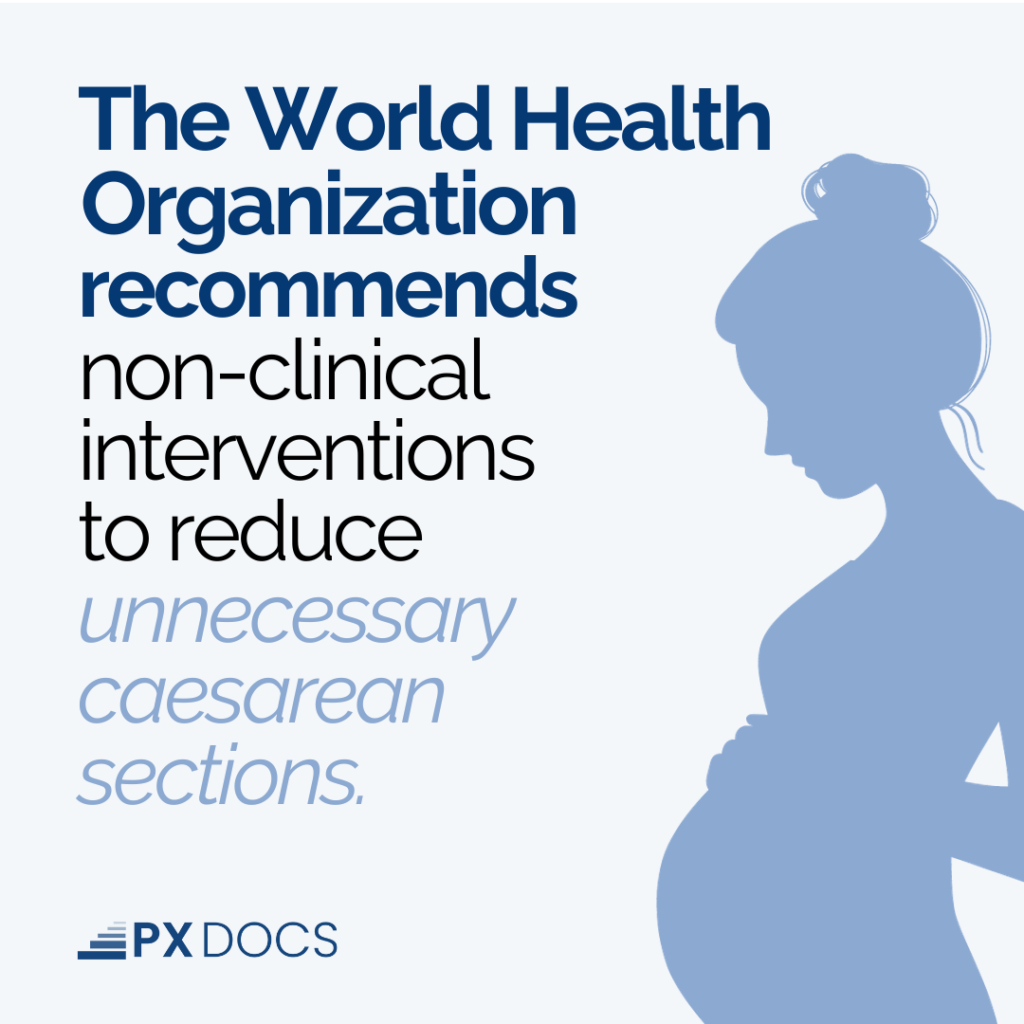
What Effects Can C-Section Complications Have on My Child?
There is certainly a noticeable difference in babies born via C-section versus vaginal delivery. In terms of most common early medical complications, things like breathing difficulties, low APGAR scores, and digestive distress are often seen early on in infants born via cesarean.
What we want to focus on with this article is not just the short-term, medically-documented effects of C-section deliveries on kids but also the long-term effects. We also will break down the science and mechanisms behind these long-term health challenges and the lasting effects your child may be experiencing.
The first challenge that is almost an absolute, almost always overlooked, and missed with C-section deliveries is the onset of subluxation in infants’ cranial (skull) and upper cervical (neck) regions. These are the most easily injured and altered areas for infants born via C-section, simply because at such a young age, they cannot protect those precious muscles, nerves, and joints that protect their brainstem and spinal cord from injury.
The force placed on a child’s skull, neck, and brainstem during a C-section delivery is immense. It’s far more physical and pressure than would ever be allowed after the birth process, so while it may be life-saving at the moment… it’s also life-altering from there on.
We all know to “protect the neck” and “hold the head” for brand new babies and infants, but we’ve made it completely “normal” and ok to use the head and neck as physical leverage (twisting, torquing, and pulling) during the C-section birth process.
In today’s world, you can literally watch a C-Section Delivery on YouTube, and the one thing we’d draw your attention to while watching that video is also what you hear. The doctors laugh and make jokes while yanking, twisting, and pulling on the child’s unprotected head and neck. When did this become okay?
It would take us another 20+ pages to go through all the neurodevelopmental complications that just an upper cervical subluxation and dysautonomia can have. So please do take the time to visit each of the other links in this article and learn about each of the layers of The Perfect Storm that often comes about after a C-section delivery.
In addition to the upper cervical and brain stem trauma that can come from C-section deliveries, here are other long-term complications each parent deserves to know about:
- Digestive distress (colic, constipation, eczema, etc.) that comes from missing out on optimal “activation” of the thoracic spine and neuromuscular system that controls motility, absorption, assimilation, and so forth for infants and children
- Respiratory and immune compromise, which can also come not only from the lack of motility throughout the ENT, lymphatic system, and lungs… but also from disruption of the microbiome and the vagus nerve.
Below is an image of an EMG scan ( a scan that measures stress, subluxation, and tension on the nerves and muscles connected to the brain and brainstem) taken on an 8-year-old child born via C-section. This child suffered from colic and recurrent ear infections as an infant and young child and now struggles with ADHD, anxiety, and learning disabilities in school.
The increased color pattern (green, blue, red) in the cervical and neck region indicates increased stress, tension, and subluxation. These tension patterns are not just caused by poor posture or sitting at a desk for too long as is commonly blamed today (and a real problem) but can persist and linger all the way back from injury and trauma to those nerves and muscles from the C-section delivery.
How to Care For Kids Born With C-Section Complications
When parents start looking for help healing their kids naturally and without drugs, we always encourage them to start in the same place – the nervous system.
The nervous system is the main “Air Traffic Control” system that modulates and controls each and every other vital system in the body, from the gut and digestive system to the immune system, motor system, hormones, emotions, and so much more.
While most online natural health resources and holistic health doctors would encourage you to start with diet and healing the gut, we take a different approach or ‘batting order’ to helping kids with long-lasting complications from C-section deliveries. We have met many families who have already tried every diet, every supplement, and every essential oil to help their kids heal… and yet still struggle.
Most especially when you feel like you’ve tried absolutely everything, chiropractic is the final missing link. Nothing works well if the nervous system is working well, first and foremost.
- Any motor tone challenges your PT, OT, and Speech Therapist may be working on your child with run through and start with the tone of the nervous system and spinal nerves first.
- Any gut and digestive issues such as food intolerances or allergies you’re looking to avoid and work through with your child – all controlled first by the vagus nerve and autonomic nervous system.
- Any respiratory and immune compromise and chronic illness like seasonal allergies, asthma, and so forth – are all governed and modulated first by the vagus nerve and autonomic nervous system.
No matter what, you’ve all tried to help your child heal and improve; it will be enhanced when you add neurologically-focused pediatric chiropractic.
Get Help Now – Get Your Child Scanned Right Away
If you feel your child still struggles with complications and long-lasting effects from a C-section delivery, consult your local PX Doctor immediately!
Our PX Docs Network is the absolute best place to start when searching for Hope, Answers, and Help for your child, no matter how old they are or what they’re struggling with today.
While we showed an image of an EMG Scan above with lasting neurological effects of C-section deliveries, there is even more to the PX Clinical Process that will really help you find the root cause of your child’s health challenges and get an incredible drug-free action plan to get your children healing and full of health once again!
Dr. Tony Ebel, DC, CACCP, CCWP
Certified Wellness + Pediatric Chiropractor

